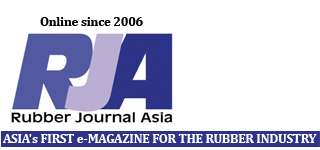Markets for recycled tires are more diverse and sophisticated than ever before, with rubber-modified asphalt an especially promising technology for the future, according to Dick Gust, director of government affairs and president of national account sales for Liberty Tire Recycling L.L.C.
But effective management of end-of-life tires (ELTs) — whether by government or industry — still plays a major role in ensuring that scrap tires get to useful end-markets, said Glenn R. Maidment, president of the Rubber Association of Canada, at the Clemson University Tire Industry Conference.
The North American tire recycling market in 2013 was strong, but still not quite where the tire industry would like it to be, according to Mr. Gust.
More than 302 million new tires of all sorts were shipped in the U.S. in 2013, he said. Meanwhile, industry experts indicate a tire recycling rate last year of between 85 and 90 percent of all scrap tires generated.
“The industry is trying to improve that percentage,” he said. “Off-the-road tires represent the new frontier in tire recycling.”
Tire-derived fuel (TDF) and civil engineering applications have long been prominent in tire recycling, Mr. Gust said, but new technologies in ground rubber — such as rubber mulch, playgrounds, athletic fields and rubberized asphalt — are threatening to surpass the more traditional markets.
“Today’s technologies clean, process and convert tire chips into a unique rubber mulch that is non-allergenic and harmless to plants, pets and children.”
Synthetic turf for athletic fields has a sustainable layer of crumb rubber that ensures its stability and cushioning capabilities, he said, but the most promising crumb rubber technology is rubber-modified asphalt.
“Innovators of the industry are converting scrap tires into rubberized asphalt highways,” he said. “These highways ride quieter, last longer and use significantly less paving materials than traditional asphalt.”
Rubberized asphalt uses a lot of scrap tires, and uses them well, Mr. Gust said. One mile of a four-lane highway paved with rubberized asphalt will use up to 80 tons of crumb rubber, equivalent to approximately 8,000 scrap tires.
Asphalt modified with scrap tire rubber costs about $30 less per ton than conventional asphalt and more than $100 less than asphalt modified with virgin polymers. It can be applied much less thickly than conventional asphalt and requires less maintenance over time, he said.
Rubberized asphalt also offers significant noise-reduction properties, provides faster water runoff for highways than conventional highways, he said, and reduces both splash-and-spray and hydroplaning. Mr. Gust showed a video of a car on a highway from a driver’s-eye view during a rainstorm. The splash-and-spray from the rain decreased notably once the vehicle reached a stretch of road paved with rubberized asphalt.
Up to now, rubberized asphalt has been used mainly in warm-weather states such as Arizona, California, Texas and Florida, Mr. Gust said, but recent experiences in Alaska, Sweden and some Canadian provinces have shown that rubberized asphalt outperforms conventional asphalt over a wide temperature range.

